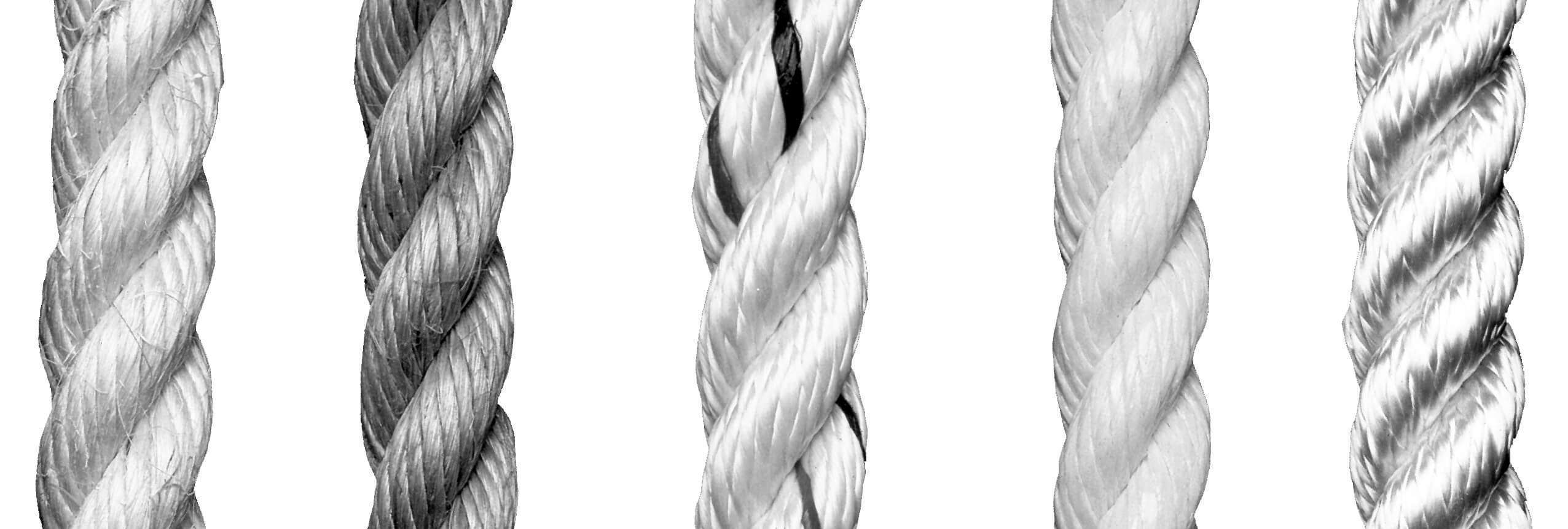FIBER ROPE GENERAL INFORMATION
Technical Resources
CERTEX USA provides abundant resources for fiber rope.
3 and 8 Strand Constructions

Sisal
Excellent low cost utility rope has about 80% of the strength of manila. Not recommended for any critical
applications.
Manila
Made from the finest abaca fiber available, excellent resistance to sunlight, low stretch, and easy to tie a
knot. Good surface abrasion resistance.
Polyester
Not quite as strong as nylon. Low stretch. Excellent surface abrasion and better resistance from sunlight than nylon. Other characteristics similar to nylon available in filament fiber type and multiplex (fuzzy)
type “77” dacron.
Polypropylene
A lightweight material with good strength and great versatility it floats, is resistant to rot, oils, gasoline, most chemicals and is waterproof. Hooven Allison’s polypropylene rope contains a special additive which reduces but does not eliminate deterioration from sunlight. Available in splitfilm (S,F,T) and monofilament fiber form.
Nylon
One of the strongest fiber rope that we manufacture. High elasticity allows absorption of shock loads which would break other types of rope. Nylon is resistant to rot, oils, gasoline, grease, marine growth or most chemicals. High abrasion resistance.
| Rope Working Characteristics | Relative Material Values | ||||
| Sisal | Manila | Polyester | Polypropylene | Nylon | |
| Strength | Fair | Fair | Excellent | Very Good | Excellent |
| Shock Load | Fair | Fair | Very Good | Very Good | Excellent |
| Surface Abrasion | Fair | Good | Excellent | Good | Very Good |
| Elasticity | Fair | Fair | Very Good | Good | Excellent |
| Floats | No | No | No | Yes | No |
| Storage Wet/Dry | Dry Only | Dry Only | Wet or Dry | Wet or Dry | Wet or Dry |
| Affected by Heat at | Weakens at 300º | Weakens at 300º | Weakens at 350º | Weakens at 150º | Weakens at 350º |
| Resistant To | |||||
| Rot & Mildew | Poor | Poor | Excellent | Excellent | Excellent |
| Sunlight | Excellent | Excellent | Excellent | Fair | Good |
| Oil & Gas | Fair | Fair | Excellent | Excellent | Excellent |
| Acids | Poor | Poor | Very Good | Excellent | Fair |
| Alkalis | Poor | Poor | Good | *Very Good* | Excellent |
*Very Good* except to concentrated Sodium Hydroxide at high temperature.
CAUTION: Because of the wide range of rope use, rope condition, exposure to the various factors affecting the rope, it is impossible to make blanket recommendations as to the correct choice or rope to use. However, we have provided the tensile strength and recommended working loads for each diameter and type of rope. These guidelines are based on tests conducted by the U.S. Cordage Institute. These strengths are based on tests of new and unused rope, with appropriate splices. Proper choice, care and inspection of the rope are essential for reasonably safe use of the rope.

